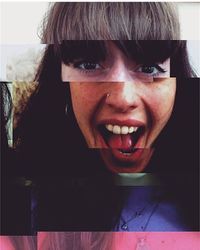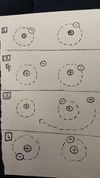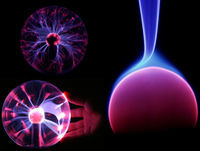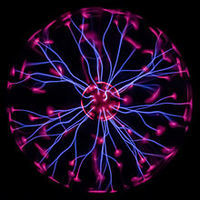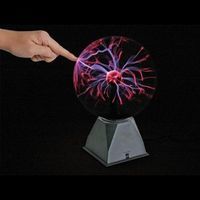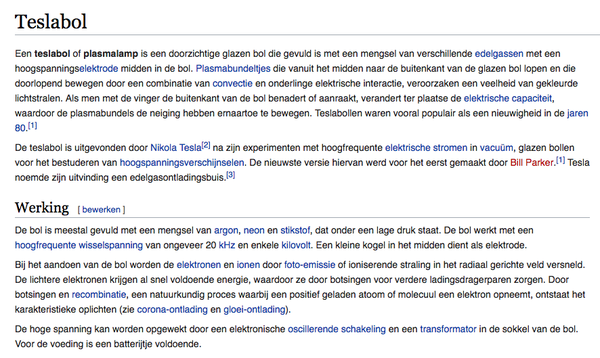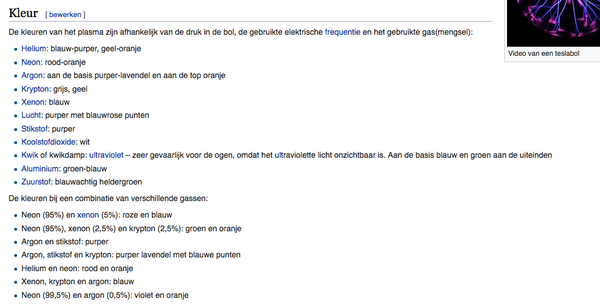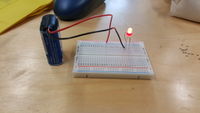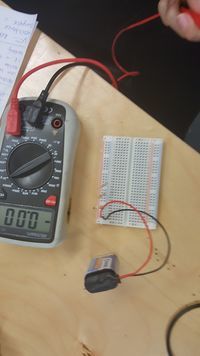User:MXMVS
Maxime van Strijland contactmecontactme 0919905@gmail.com
Contents
1st Class: Group exercise We Are Electrons
We learned about '+ and -', which are electrons that come together, and we did an exercise where we found out that if '- and -' came together, they would clash. To make this experiment more clear, you can take a look at the picture.
––––––––––––––––––––––––––––––––––––––––––––––––––––––––––––––––––––––––––––––––––––––––––––––––––––––––––––––––––––––––––––––––––––––––––––––––––––––––––––––––––––––––
Ideas For Project
T E S L A B O L
My idea is to make my own Teslabol (as well known as a Plasmabol) Next to the fact that this bol is so esthetical, i think the Teslabol is an amazing way to measure energy. Im very curious how this bol works. Can a Teslabol be flat as well? Or is there a reason why its a bol? Can i make an installation of more Teslabols which would react if people will pass by?
Between our group (Quint, Syree, Iris, Kaylee and Sungmi) We found out that everybody wanted to do something interactive, where the visitor becomes a user. Our idea is to make an exhibition with the theme: Interactivity by the people. –––––––––––––––––––––––––––––––––––––––––––––––––––––––––––––––––––––––––––––––––––––––––––––––––––––––––––––––––––––––––––––––––––
No Class: Holidays
––––––––––––––––––––––––––––––––––––––––––––––––––––––––––––––––––––––––––––––––––––––––––––––––––––––––––––––––––––––––––––––––––––––––––––––––––––––––––––––––––––––––
No Class: Hacking
––––––––––––––––––––––––––––––––––––––––––––––––––––––––––––––––––––––––––––––––––––––––––––––––––––––––––––––––––––––––––––––––––––––––––––––––––––––––––––––––––––––––
2nd Class: Measuring
In a battery, electrons flows from + to - . A Led has a long and a short side. The long side is + and is called Anode, the short side is - and is called Cathode. You also have a resistor, which limits the pressure of the battery for example for a LED. A resistor is also known as Ohm. You can calculate how much the resistor resists with a dutch "donkey bridge": Zij BRacht Rozen Op GErrits GRaf Bij Vies GRauw Weer (check google for translation or more information ;) )
1-2-X Zij = Zwart = 0-0-1
Bracht = Bruin = 1-1-10
Rozen = Rood = 2-2-100
Op = Oranje = 3-3-1000
Gerrits = Geel = 4-4-10K
Graf = Groen = 5-5-100K
Bij = Blauw = 6-6-1M
Vies = Violet = 7-7-10M
Grauw = Grijs = 8-8-100M
Weer = Wit = 9-9-1000M
We also made a circuit on a plugboard with a 9 volt battery, a resistor and a LED. the rest of the experiments were about measuring with a volt meter. What you need (ask at the Interaction Station):
* Multimeter * 9 Volt battery (5V in the tutorial) * 9 Volt battery clip for in a breadboard * 470 Ohm resistor (1K Ohm in the tutorial) * LED * Breadboard
Outcome: Voltage 7 Resistance 465 Ampere 19.3
Measuring resistance
What you need (ask at the Interaction Station):
* Multimeter * 3 random resistors * 3 resistors of the same value * Breadboard
Series Resistance Outcome:
Volt 1th restitor 2.38 Volt 2nd/3th 2.39
Volt 1th + 2nd together 4.77 Volt 2nd + 3th together 4.78 Volt 1th +2nd +3th together 7.16
I = V/R
9,11: 2,38 = 3,83
9,11 : 7,16 = 1,27
Parallell Resistance Outcome
Voltage of 3 resistors 8.41
Measuring Current
What you need (ask at the Interaction Station):
* Multimeter * 9 Volt battery (5V in the tutorial) * 9 Volt battery clip for in a breadboard * 470 Ohm resistor (1K Ohm in the tutorial) * LED * Breadboard
Outcome Volt 7 Resistance 465 Ampere 19.3
Measuring voltage and current in a series circuit
What you need (ask at the Interaction Station):
* Multimeter * 9 Volt battery (5V in the tutorial) * 9 Volt battery clip for in a breadboard * 3 resistors random resistors * Breadboard
Outcome Volt 9.11 Ampere 3.83
I = V/R
9,11: 2,38 = 3,83
9,11 : 7,16 = 1,27
Measuring voltage and current in a parallel circuit
What you need (ask at the Interaction Station):
* Multimeter * 9 Volt battery (5V in the tutorial) * 9 Volt battery clip for in a breadboard * 3 resistors random resistors * Breadboard
Outcome: Battery voltage: 8.58 Voltage of 3 resistors : 8.41
I=V/R 8.58/8.41 = 1.02
––––––––––––––––––––––––––––––––––––––––––––––––––––––––––––––––––––––––––––––––––––––––––––––––––––––––––––––––––––––––––––––––––––––––––––––––––––––––––––––––––––––––
3rd Class: Keyboard
In the third class we had to make a Keyboard. in this assignment we could show what we have learned about circuits with resistors and LEDs, and about measuring voltage. we also learned new things about how to adjust a copper plate, and how to solder a microchip. First we picked a schematic. Axel Verwee and I had schematic 1 so we teamed up for this assignment. We had to draw the circuit on a copper plate. Ad first we tried to iron a image on the copper. this only worked for half of the image. Then we grinded our version of the schematic on the copper plate. The soldering of the chip was the hardest part, this went wrong the first time as the paws of the chip broke when we tried to attach the treads to other componends. We attached all the parts of the keyboard to each other and on the kopper plate. We designed our keyboard in such a way that the chip was floating in the air. It was very nice to look at and it worked! you only had to hold the speaker up because we placed it upside down, the metal part under the speaker made contact to the copper plate which we could solve with a small piece of tape underneed the speaker.
[I copied this text from Kaylee, as i missed this class] ––––––––––––––––––––––––––––––––––––––––––––––––––––––––––––––––––––––––––––––––––––––––––––––––––––––––––––––––––––––––––––––––––––––––––––––––––––––––––––––––––––––––
No Class: Holiday
––––––––––––––––––––––––––––––––––––––––––––––––––––––––––––––––––––––––––––––––––––––––––––––––––––––––––––––––––––––––––––––––––––––––––––––––––––––––––––––––––––––––
4th Class: Brainstorm Own Project
This class was about brainstorming for our independent presentation. We had to choose something we've learned in the lessons before, to work on further as your own project. I liked the way we measured energy by holding eachothers hand. I think it's amazing how we all exist out of energy. To come back on my first ideas (the Teslabol, which had also something to do with energy) i was wanted to combine these two. In this class we had to make 5 drawings, based on 5 steps, how to realise this project from what we've learned in class till what it can be as in exhibition for the presentations.
The 5 steps:
1. Make an illustration of your most memorable insight of what you have learned/discovered;
2. Make a drawing of how this insight can be made into a physical artefact;
3. Make a drawing of an independent idea you would like to build/construct;
4. Make a drawing of this idea in its most minimal/essential form;
5. Make a drawing of this idea in its most expansive/immersive form.
[TROUBLES WITH UPLOADING PICTURES, PICTURES ARE "LIVE" AVAILABLE AT PRESENTATION] ––––––––––––––––––––––––––––––––––––––––––––––––––––––––––––––––––––––––––––––––––––––––––––––––––––––––––––––––––––––––––––––––––––––––––––––––––––––––––––––––––––––––
Own Project
From the Teslabol idea to measuring energy through people in the class exercise, i found out i wanted to make something where contact between people creates something. Because of Kaylee and i found out with the brainstorming session, we kind of had the same ideas, we decided to work together. As Kaylee is doing fashion, and im doing graphic design, we were brainstorming about a project where we could bring imput from our majors. Our first ideas were to do something with the Teslabol. I found out that if you touch a Teslabol with a TL-light, it lightens up immediatly. So our idea was to do an exhi
